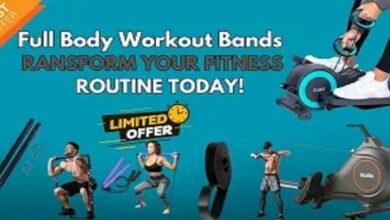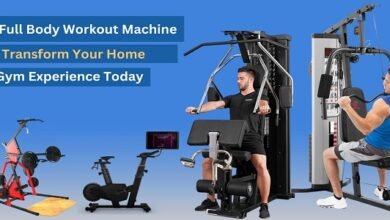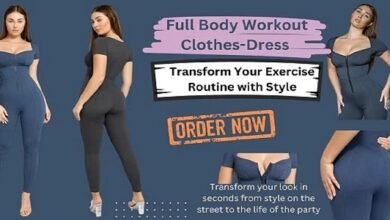Full body workouts engage multiple muscle groups in one session. They are efficient and effective for building strength and improving fitness.
In today’s busy world, many people seek quick and effective ways to stay fit. Full body workouts offer a practical solution. These workouts combine exercises that target various muscles, allowing you to achieve results in less time. Whether you’re a beginner or an experienced athlete, full body workouts can fit into any fitness routine.
They help save time at the gym while still providing a complete exercise experience. Understanding how to structure these workouts can lead to better health and fitness. In this post, we will explore the benefits and key elements of full body workouts to help you get started.
The Appeal Of Full Body Workouts
Full body workouts are gaining popularity. They offer many benefits. People enjoy their efficiency and health perks. This section explores why full body workouts appeal to so many.
Efficiency And Time Management
Full body workouts save time. They allow you to train multiple muscle groups in one session. This is especially helpful for busy schedules.
- Shorter workout sessions: Complete a full workout in 30-45 minutes.
- Less frequent visits: Train 2-3 times a week instead of 5-6.
- Maximize calorie burn: Engage more muscles for better fat loss.
This efficiency means you can fit workouts into your day easily. Less time in the gym leads to more free time.
Holistic Health Benefits
Full body workouts provide numerous health benefits. They support physical and mental well-being.
| Health Benefit | Description |
|---|---|
| Increased strength | Build overall body strength with compound exercises. |
| Improved endurance | Enhance stamina through varied movements. |
| Better coordination | Develop body awareness and balance with different exercises. |
| Mental health boost | Exercise helps reduce stress and anxiety levels. |
These benefits contribute to overall health. Full body workouts encourage a balanced lifestyle. They keep both body and mind fit.
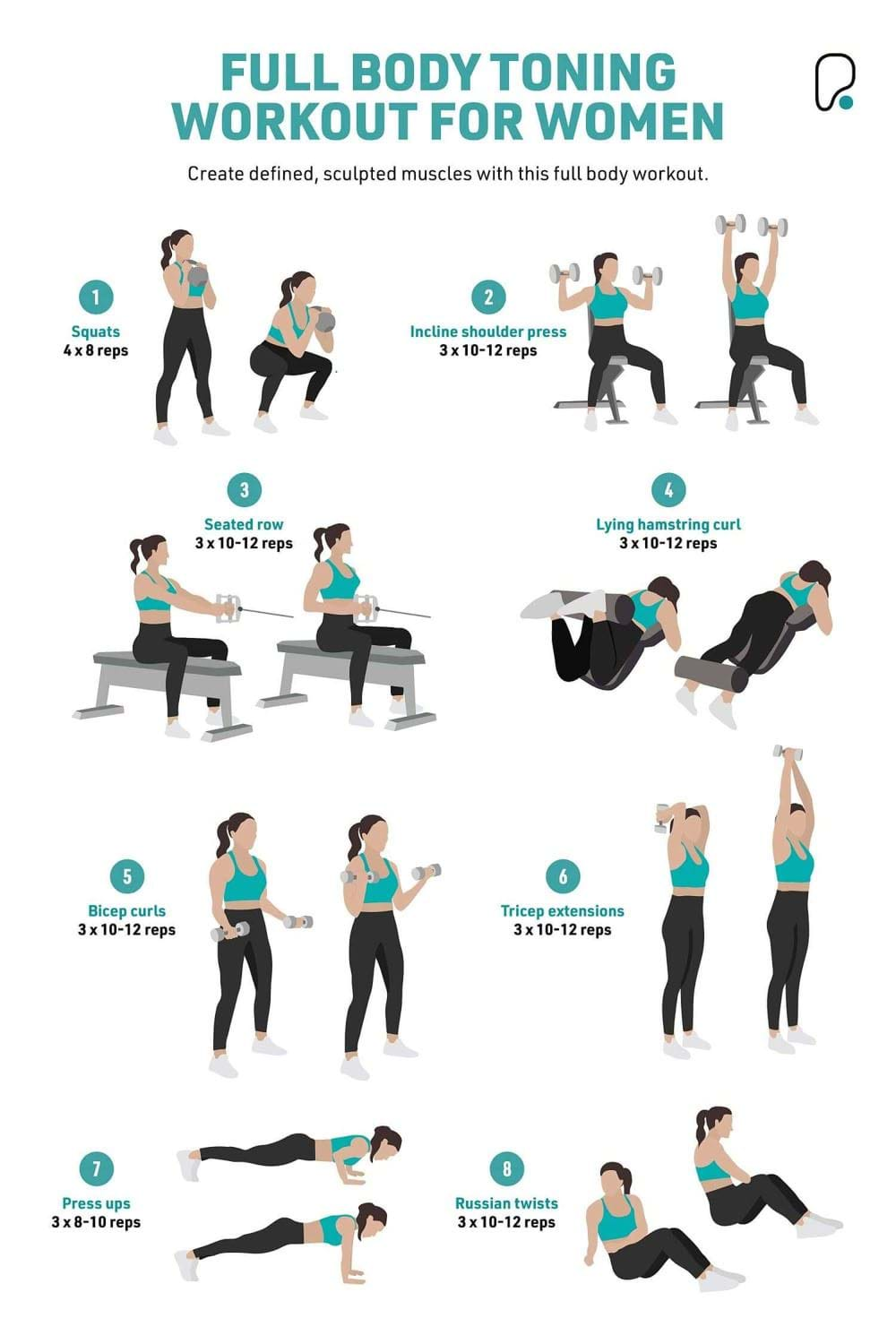
Credit: www.puregym.com
Key Principles Behind Full Body Training
Full body workouts focus on engaging multiple muscle groups. This approach saves time and boosts overall strength. Understanding the key principles helps you design effective routines.
Using full body training can lead to better fitness results. It suits beginners and experienced athletes alike. Let’s explore the main principles that make full body workouts effective.
Compound Movements
Compound movements are the backbone of full body workouts. These exercises work several muscles at once. They improve strength and coordination. Examples include squats, deadlifts, and bench presses.
These movements mimic real-life activities. They help with daily tasks like lifting and bending. Compound exercises burn more calories too. This makes them efficient for weight loss and muscle gain.
Balanced Muscle Engagement
Full body workouts aim for balanced muscle engagement. They target both upper and lower body muscles. This prevents muscle imbalances and reduces injury risks.
Engaging different muscle groups improves overall strength. It enhances stability and endurance. Balanced routines promote better performance in sports and daily activities.
Choosing exercises that work multiple areas is key. This helps you build a strong, functional body. Full body training is effective for everyone, regardless of fitness level.
Designing Your Full Body Workout Plan
Creating a full body workout plan is essential for balanced fitness. This plan helps you target all major muscle groups. It can improve strength, endurance, and overall health. Follow these key steps to design your plan.
Exercise Selection
Choose exercises that engage multiple muscle groups. This will maximize your workout efficiency. Here are some effective exercises to include:
- Squats: Great for legs and core.
- Push-ups: Targets chest, shoulders, and triceps.
- Deadlifts: Works the back, legs, and core.
- Pull-ups: Strengthens back and biceps.
- Plank: Excellent for core stability.
Mix compound movements with isolation exercises. This combination builds strength and muscle tone.
Frequency And Recovery
Plan your workout frequency based on your goals and fitness level.
| Experience Level | Workout Frequency | Recovery Time |
|---|---|---|
| Beginner | 2-3 times per week | 48 hours between sessions |
| Intermediate | 3-4 times per week | 24-48 hours between sessions |
| Advanced | 4-5 times per week | 24 hours between sessions |
Listen to your body. Rest is vital for recovery. Proper recovery prevents injury. Hydrate and eat nutritious foods for better results.
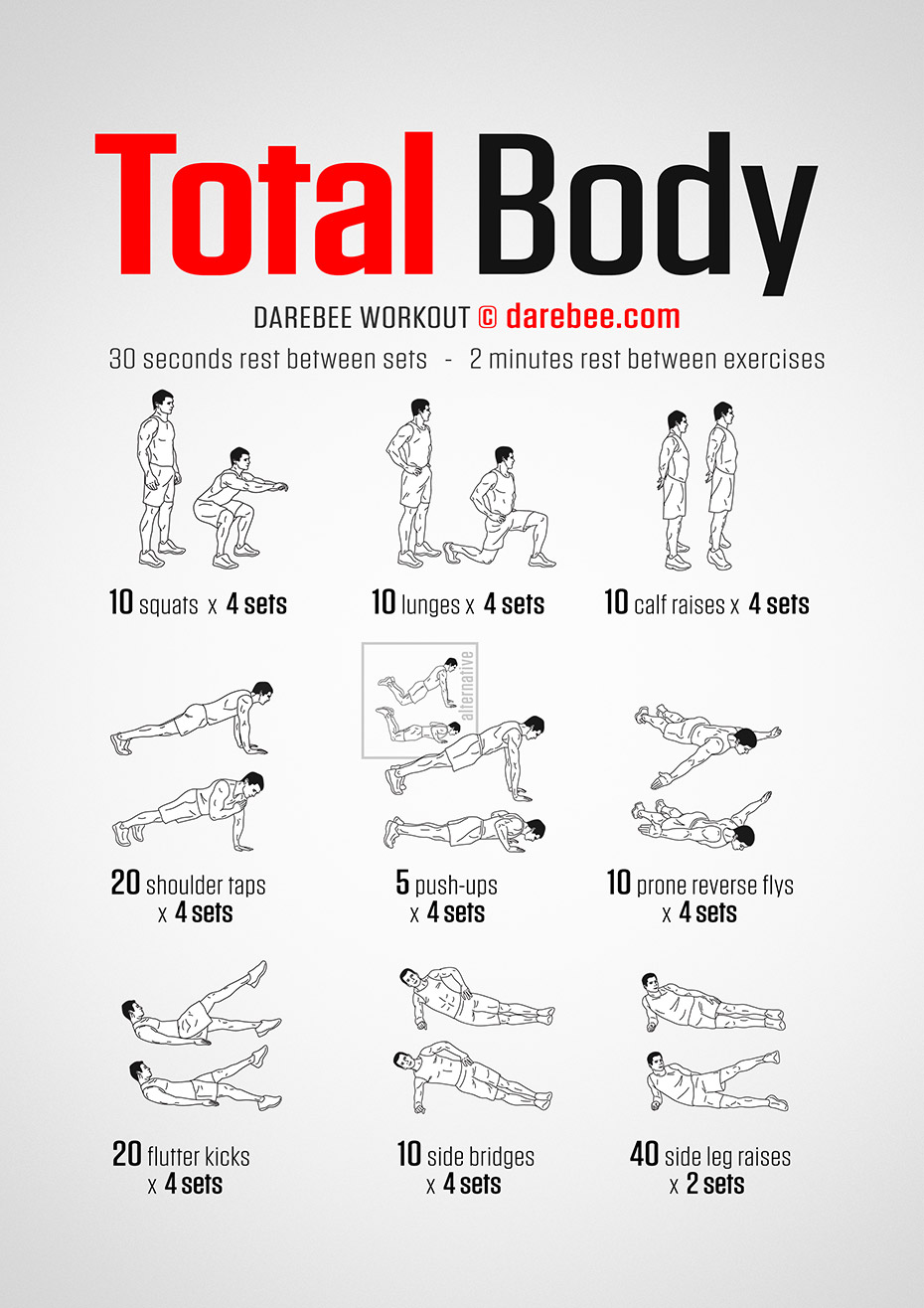
Credit: darebee.com
Strength & Stamina: The Twin Pillars
Strength and stamina are two important parts of fitness. Together, they help you perform better in workouts. Full body workouts improve both. They build your muscles and boost your endurance.
Building Raw Power
Strength is all about power. It helps you lift heavier weights and do more. Here are some ways to build strength:
- Focus on compound exercises like squats and deadlifts.
- Use heavier weights with fewer reps.
- Incorporate bodyweight exercises like push-ups and pull-ups.
Strength training can change your body. It increases muscle size and tone. It also helps with daily activities. You will find everyday tasks easier.
Enhancing Endurance
Stamina is key for long-lasting energy. It helps you keep going in workouts and sports. Here are effective ways to enhance endurance:
- Incorporate cardio exercises like running or cycling.
- Try high-intensity interval training (HIIT).
- Gradually increase workout duration and intensity.
Endurance training supports heart health. It helps your body use oxygen better. You will feel more energetic throughout your day.
| Type of Training | Benefits |
|---|---|
| Strength Training | Builds muscle, improves power |
| Endurance Training | Boosts energy, supports heart health |
Combining strength and stamina training creates a balanced routine. This approach leads to better fitness results. Full body workouts give you the best of both worlds.
Essential Exercises For A Solid Foundation
Building a strong foundation is key to full body workouts. Essential exercises help improve strength, stability, and overall fitness. Focusing on these movements prepares your body for more challenging workouts. Let’s explore some of the best exercises to create a solid base.
Squats And Deadlifts
Squats and deadlifts are fundamental exercises. They target multiple muscle groups and enhance overall strength.
- Squats: Excellent for legs and glutes.
- Deadlifts: Focus on back, legs, and core.
Here’s a simple comparison:
| Exercise | Muscle Groups Targeted | Benefits |
|---|---|---|
| Squats | Quadriceps, Hamstrings, Glutes | Builds leg strength and improves balance. |
| Deadlifts | Back, Legs, Core | Enhances overall strength and stability. |
Both exercises can be modified. Try bodyweight squats for beginners. Use lighter weights for deadlifts until you feel comfortable.
Push And Pull Dynamics
Push and pull exercises balance your workout. They build strength in different muscle groups.
- Push Exercises: Target chest, shoulders, and triceps.
- Pull Exercises: Focus on back and biceps.
Here are some common push and pull exercises:
- Push-ups: Great for upper body strength.
- Bench Press: Effective for chest and arms.
- Pull-ups: Excellent for back and arms.
- Rows: Good for building back muscles.
Incorporating both dynamics ensures a balanced workout. Each exercise improves functional strength.
Nutrition And Full Body Workouts
Nutrition plays a vital role in full body workouts. It fuels your body and aids recovery. Eating the right foods helps build muscle and improve performance. Understanding what to eat is important for success.
Full body workouts demand energy and strength. Nutrition provides the necessary support. Balancing your diet can enhance your results.
Fueling Muscle Growth
Muscle growth requires adequate protein. Protein helps repair and build muscle tissues. Include lean meats, fish, eggs, and legumes in your meals. These foods are rich in protein.
Carbohydrates are also key. They provide energy for your workouts. Choose whole grains, fruits, and vegetables. These foods keep your energy levels steady.
Healthy fats support hormone production. Include avocados, nuts, and olive oil in your diet. These fats help with recovery and overall health.
Optimizing Energy Levels
Maintaining energy is crucial for full body workouts. Start your day with a balanced breakfast. Include proteins, fats, and carbs for lasting energy.
Stay hydrated. Water is essential for performance and recovery. Drink water before, during, and after your workouts.
Snacking wisely can boost your energy. Choose snacks like yogurt, fruits, or nuts. These options provide quick energy without heaviness.
Tracking Progress And Adjustments
Tracking your progress is important for full body workouts. It helps you see how far you’ve come. Making adjustments keeps your routine effective. This section explores how to set realistic goals and adapt your workout.
Setting Realistic Goals
Setting goals gives you direction. Start with small, achievable targets. Aim for consistency, not perfection. For example, commit to working out three times a week. This is a good start.
As you progress, adjust your goals. If you complete three workouts each week, aim for four. Keep your targets specific and measurable. This helps track your success better.
Adapting The Workout Routine
Your body changes as you train. Adapt your workouts to avoid plateaus. Change exercises or increase weights. This keeps your body challenged.
Listen to your body. If you feel pain, modify the exercise. Consider rest days to recover. This helps prevent injury and keeps you motivated.
Regularly review your progress. Check your strength, endurance, and flexibility. Use this information to tweak your routine. Progress tracking can guide you on what to change.
Common Mistakes To Avoid
Full body workouts can be effective and enjoyable. Many people make mistakes that limit their results. Understanding these common mistakes can help you reach your fitness goals.
Overtraining Risks
Overtraining can harm your body. It leads to fatigue and increased injury risk. Signs of overtraining include constant tiredness and decreased performance.
Listen to your body. If you feel worn out, take a break. Rest days are important. They allow muscles to recover and grow stronger.
Neglecting Rest And Sleep
Rest and sleep are key to a successful workout plan. Many people skip rest days. This can slow progress and lead to burnout.
Aim for 7-9 hours of sleep each night. Sleep helps your body heal and recharge. Without enough rest, your workouts will suffer.
Plan your routine wisely. Include rest days and prioritize sleep. Your body will thank you for it.
Success Stories: Transformations With Full Body Workouts
Many people have found success with full body workouts. These workouts build strength and endurance. They can help anyone, regardless of fitness level. Real stories show how effective they are. Let’s explore some inspiring transformations.
Case Studies
| Name | Before Weight | After Weight | Time Period |
|---|---|---|---|
| Sarah | 180 lbs | 140 lbs | 6 months |
| Mike | 220 lbs | 180 lbs | 8 months |
| Emily | 150 lbs | 125 lbs | 5 months |
These case studies show real change. Each person started with a full body workout plan. They followed the plan consistently. The results are clear.
Inspirational Journeys
- Sarah: She struggled with weight for years. Full body workouts helped her find strength. Now, she feels confident in her body.
- Mike: Mike was tired and lacked energy. He committed to a full body routine. Now, he enjoys playing with his kids.
- Emily: Emily wanted to tone her body. Full body workouts changed her life. She now runs marathons.
These journeys inspire others. They show that anyone can achieve their goals. Full body workouts can be a key part of that journey.
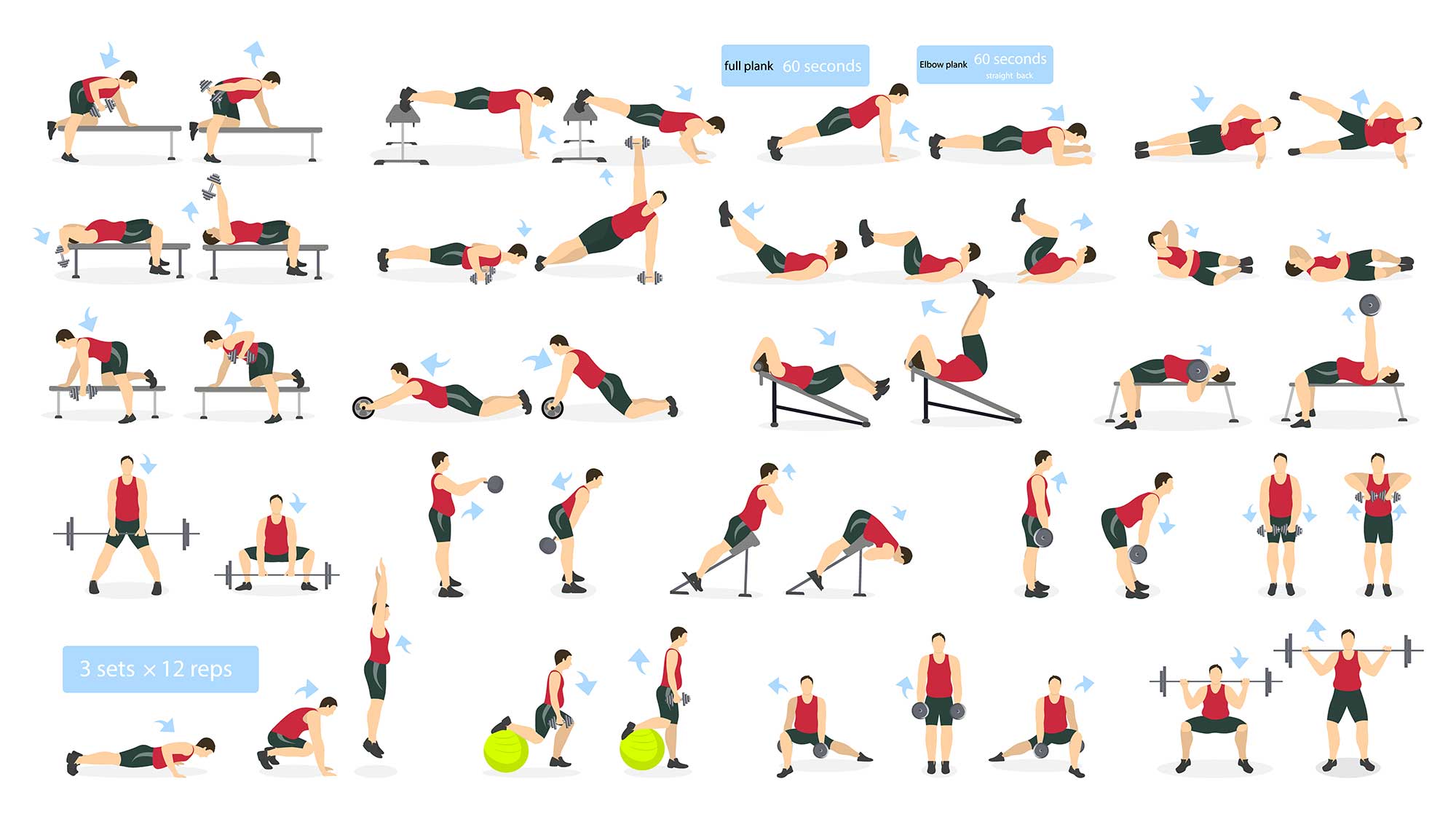
Credit: www.nitrocut.com
Advanced Techniques For Experienced Athletes
Experienced athletes often seek new methods to improve their performance. Full body workouts can benefit from advanced techniques. These methods enhance strength, speed, and endurance. They also prevent boredom in training routines.
Periodization Strategies
Periodization involves planned training cycles. It helps athletes peak at the right time. Start with a base phase to build endurance. Then, shift to a strength phase for muscle growth.
Incorporate a power phase next. This phase focuses on explosive movements. Finally, include a recovery phase to prevent burnout. This strategy keeps workouts fresh and effective.
Incorporating Plyometrics And Hiit
Plyometric exercises are great for building power. They improve speed and agility. Jump squats and box jumps are popular choices. Add these exercises into your routine for better results.
High-Intensity Interval Training (HIIT) is another effective method. It combines short bursts of intense effort with rest. This approach boosts cardiovascular fitness and burns fat. Mix HIIT sessions into your weekly workouts.
Using both plyometrics and HIIT enhances overall performance. They challenge muscles in new ways. This variation keeps the body guessing and adapting.
Frequently Asked Questions
What Are Full Body Workouts?
Full body workouts engage multiple muscle groups in a single session. They typically include exercises like squats, push-ups, and deadlifts. These workouts are efficient for building strength and improving overall fitness. They are suitable for beginners and experienced athletes alike, making them a versatile choice for any fitness routine.
How Often Should I Do Full Body Workouts?
For optimal results, aim for full body workouts 2 to 3 times per week. This frequency allows for adequate recovery while promoting muscle growth and fat loss. Ensure you have rest days in between sessions to prevent overtraining. Listen to your body and adjust based on your fitness level and goals.
What Equipment Do I Need For Full Body Workouts?
You can perform full body workouts with minimal equipment. Essential items include dumbbells, resistance bands, and a yoga mat. For more advanced workouts, consider kettlebells or a barbell. However, many exercises can be done using just body weight, making them accessible for everyone.
Are Full Body Workouts Good For Weight Loss?
Yes, full body workouts are effective for weight loss. They increase calorie burn by working multiple muscle groups simultaneously. Combining strength training with cardiovascular exercises boosts metabolism and promotes fat loss. Consistency and proper nutrition are key for achieving weight loss goals alongside these workouts.
Conclusion
Full body workouts offer many benefits. They save time and build strength. You can work multiple muscle groups at once. This makes your routine efficient and effective. Consistency is key for results. Try different exercises to keep it interesting. Listen to your body and rest when needed.
Staying active improves your mood and health. Embrace the journey of fitness. Remember, every small step counts. Start today and enjoy the process. Your body will thank you for it.
